Winter FirBiE with the 3500 Club
- Peaks: Fir, Big Indian, Eagle
- Type: Loop (Car Stack)
- Time: 10.5 h
- Distance: 9.2 mi
- Elevation Gain: 3114 ft
- Hikers: Dan, Marv and 7 others from the 3500 Club
Timeline:
- 8:45 AM Start
- 11:45 AM Summit Fir
- 2:10 PM Summit Big Indian
- 4:25 PM Summit Eagle
- 4:50 PM Sunset
- 5:00 PM Start bushwhack descent
-
7:15 PM Back at car
- Tracks: AllTrails
- Conditions: Some rain at the start, partly cloudy in the middle, snowy at night. Mud lower down but around six inches of snow near the summits.
With 2023 finished, I could set aside my goal of hiking all the high peaks in a calendar year and focus on the next one: winter peaks. After my flurry of hikes to end the year, I thought it would be nice to do some 3500 Club Hikes. Let someone else plan them and arrange car shuttles! I needed Big Indian and Eagle as winter peaks, so Marv Friedman’s Fir/Big Indian/Eagle (FirBiE) hike was an easy choice.
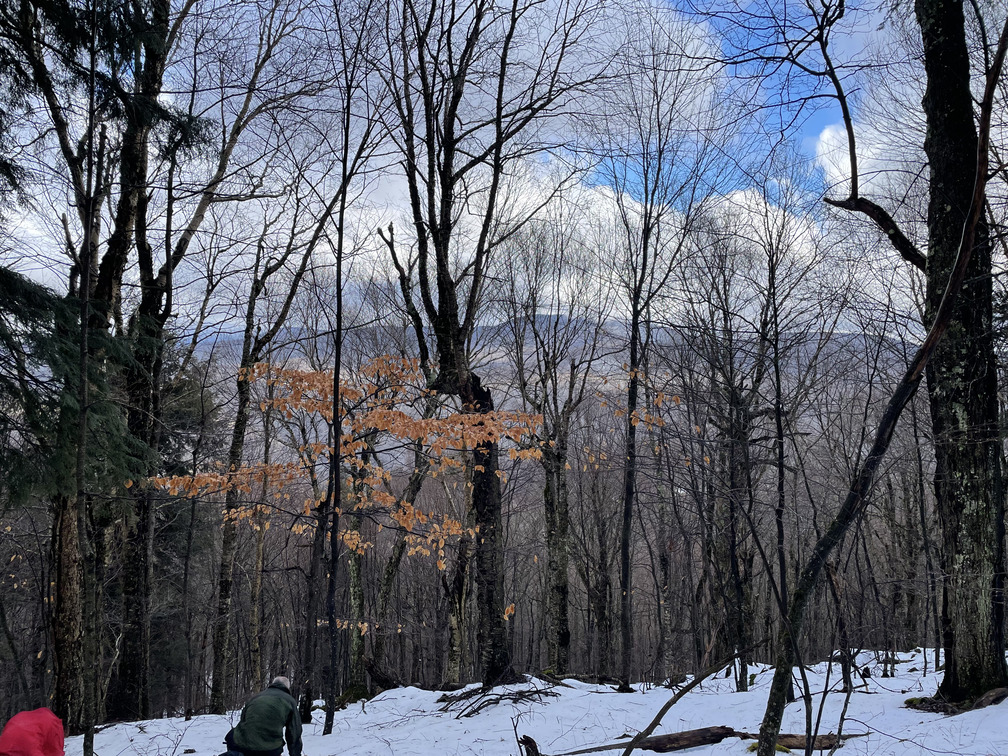
As the date got closer, the conditions looked iffy. Heavy rain overnight but maybe only a drizzle by morning. Marv pushed the hike start back to 8:30 AM to give it a little more time to dry off. Things weren’t looking promising as I drove through a torrential downpour on I-87 on the drive up. I had to put my windshield wipers on the fastest setting to see in front of me. But by the time I got off the Thruway and drove past Phoenicia, the rain had slowed to a drizzle and there were a few patches of blue sky visible.
I’d done the FirBiE loop with John last May but Marv planned a different starting point, Maben Hollow. I didn’t know it yet, but he also planned a very different descent from Eagle. I was curious to see what this version of the hike looked like. I was getting ready in my car when Marv announced that we were leaving, hurry up! Apparently he’s known for prompt departures. I scrounged my things together and hopped in another car to shuttle over to the start point. The only thing I forgot was a charging cable for my phone. Not a big deal.
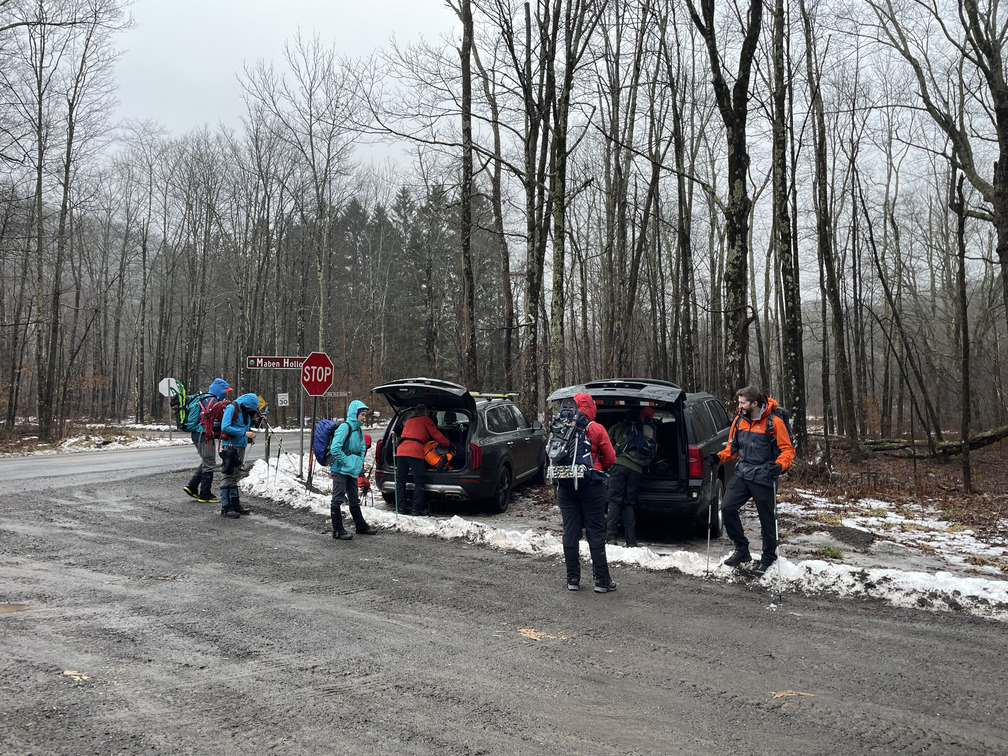
We parked right off the main road at Maben Hollow and did quick intros. Everyone was working on some list, whether it was the 3500, their winter peaks, or their grid. There was a bit of rain at the start so I began wearing a fleece and a rain jacket. I put toe warmers in my boots. It was in the 40s and I probably didn’t need them, but I figured I’d rather keep my toes warm if they got wet later.
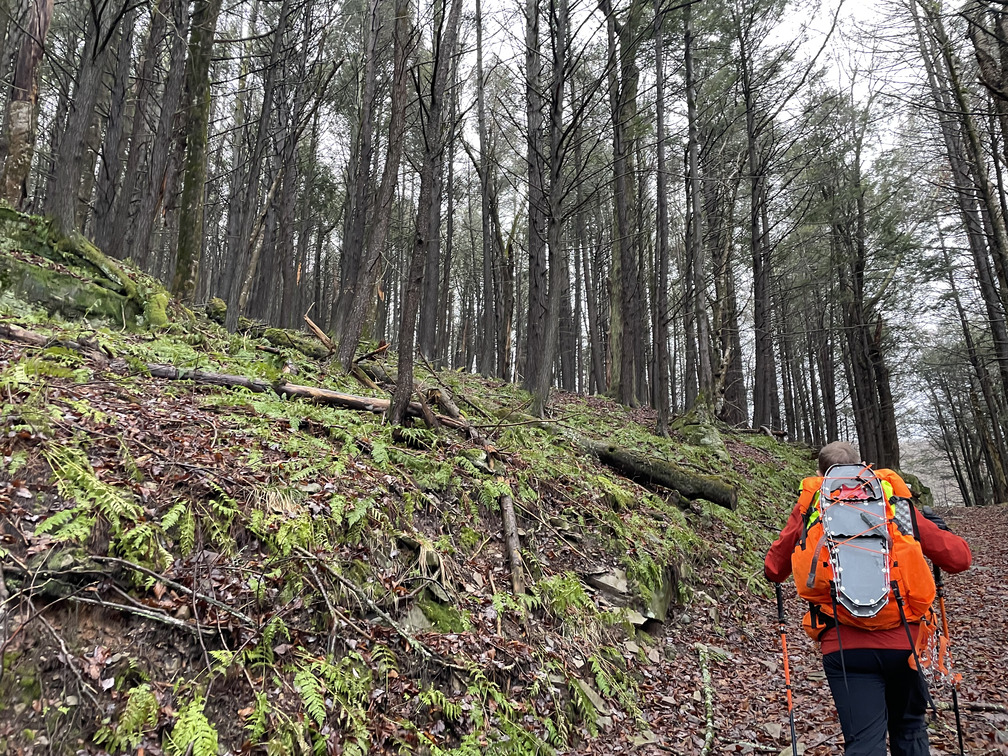
We were quickly off the paved road and following an old logging road that paralleled a stream through an easement into state lands. Thanks to the heavy rains last night, the streams were roaring. Marv set a very deliberate pace. He said that hikers were always starting too fast and then running out of steam.
The weather quickly improved as we hiked and we started to get nice views of Panther and Giant Ledge behind us. We lost the logging road and ascended into snowier terrain. Marv said that there was a herd path, even if it was hard to see. You should look for clean, white snow and openings. There’s no trees in the path. Don’t fight through branches unless you see a clearing up ahead. Follow the “rule of up:” up is good, there are no false summits on Fir.
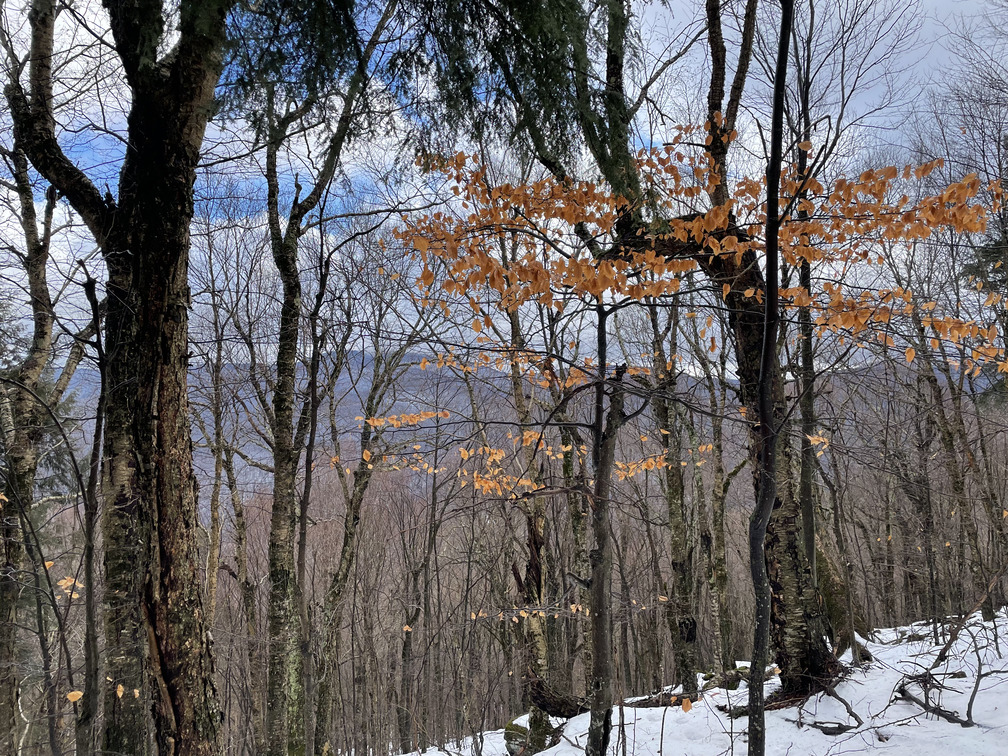
As we got closer to Fir we put on our snowshoes and Marv tried to institute a round-robin system where each person would go 50–100 paces at the front, navigating and breaking the path before rotating to the caboose to rest up. The other hikers really didn’t seem to get this. One hiker in particular spent at least half a mile at the front and kept stopping every few seconds to ask if she was going the right way. I was already frustrated with our pace and this wasn’t helping. But when you’re in a group, you all have to move together.
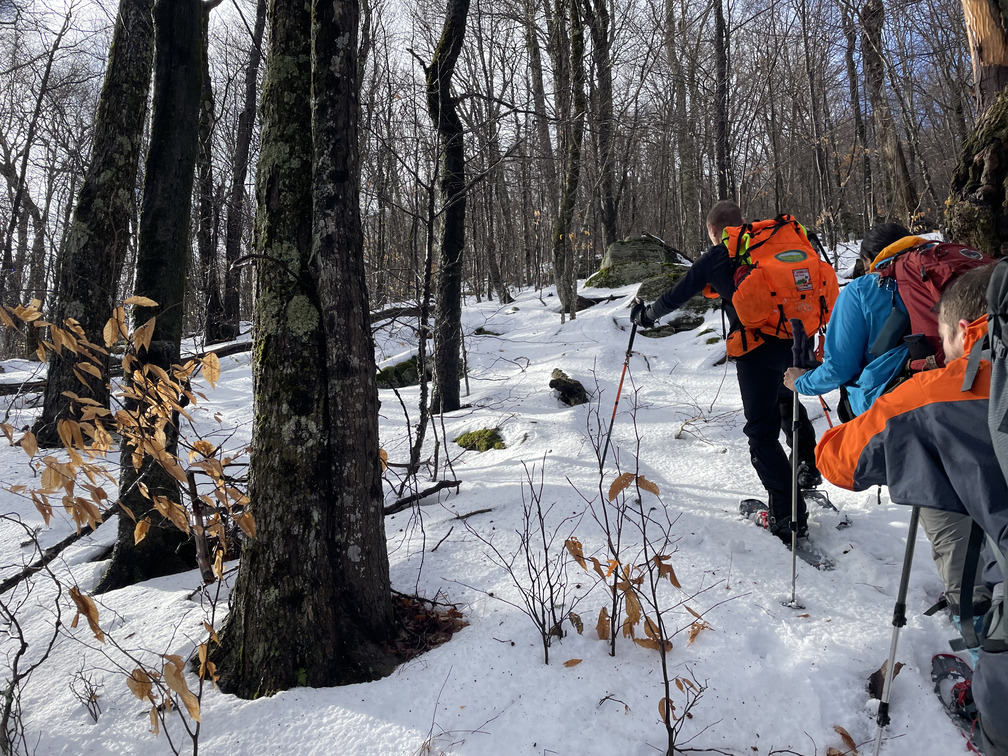
The herd path got a bit clearer as we approached Fir and it was a relief when we finally saw the canister. The notebook had been swapped out in September so I couldn’t find my previous entries. When I did my first 3500 hike with Maple last March, we spent very little time at each summit. If you spent ten minutes at each of the six summits on that hike, it would add an hour and you’d be hiking down in the dark. Makes sense! Marv had a very different approach. He announced that we’d be spending “at least ten minutes” at this summit and then disappeared. We wound up spending 20 minutes there.
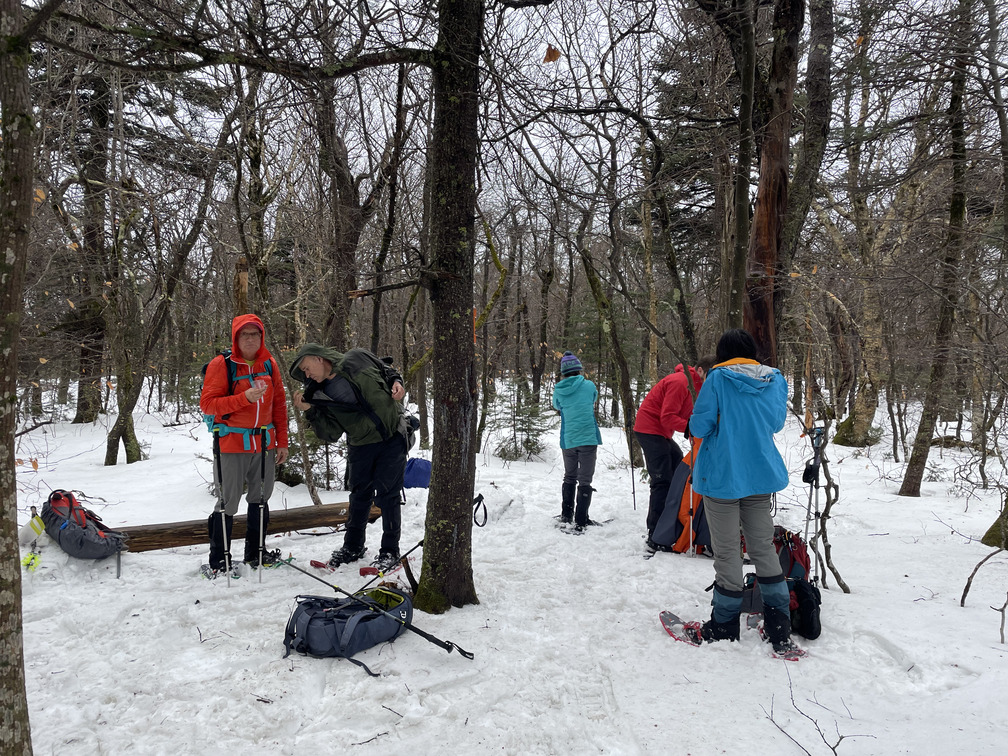
This was enough time to really cool down, and my toes and fingers were quite cold for the trek over to Big Indian. My toes in particular had gotten wet. This was a bit of a low point. I was cold and we clearly weren’t going to finish this hike in the light. I switched to warmer gloves and put on a warmer hat and that helped immensely. Eventually I just stopped noticing my feet.
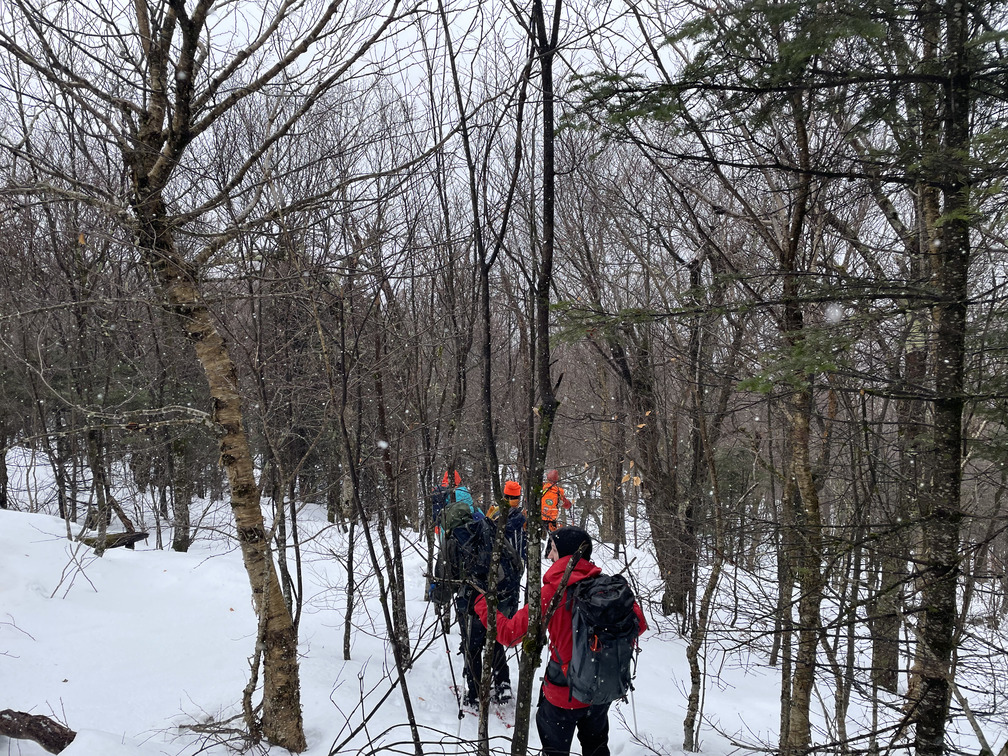
The trek over to Big Indian took longer than I remembered and finished with a steep ascent over some rocks. Once again, we spent 20 minutes stationary at the summit while Marv disappeared. We had nice views of another peak (I think Doubletop?) on the descent from Big Indian.
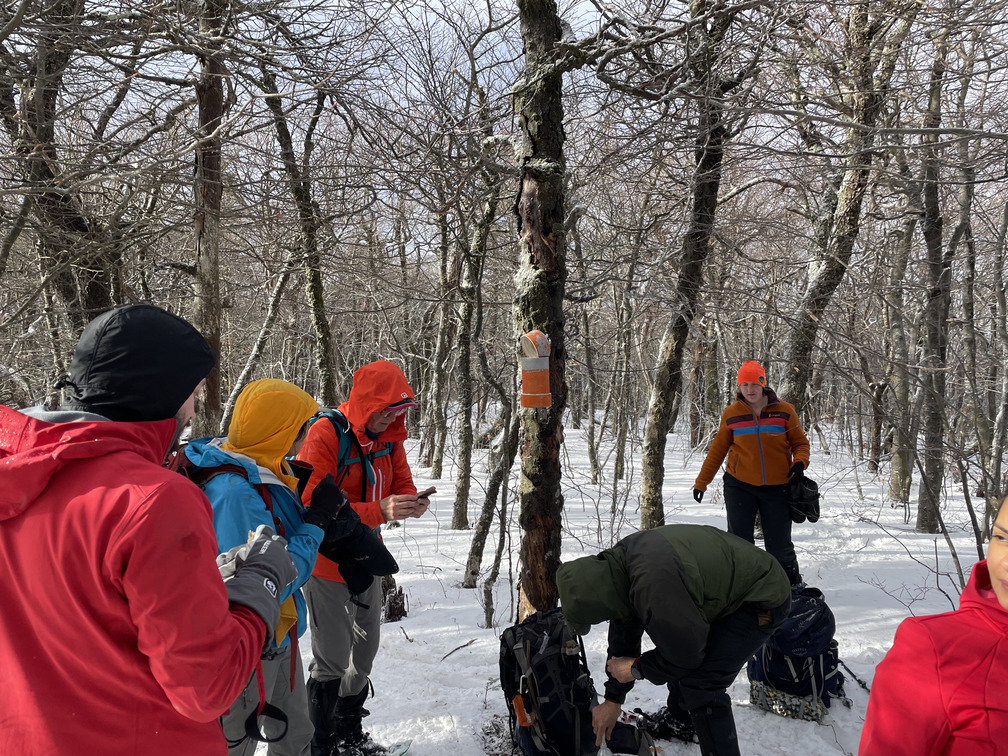
Soon we were back on the blazed trail. Herd paths are often nicer than the official ones, and that was definitely the case here. The herd path was clean snow, but the blazed path was snow mixed with open water. Marv said that during the summer he’d be a stickler for making people hike in the middle of the path no matter what. But in the winter it’s OK to hike a parallel side track because you’re not going to disturb the frozen soil or plants. He said this is also the reason that you’re allowed to camp above 3500 feet in the winter: since everything is frozen, it’s less likely that you’ll disturb delicate vegetation. I imagine many fewer people are interested in camping that high up in the winter than in the summer!
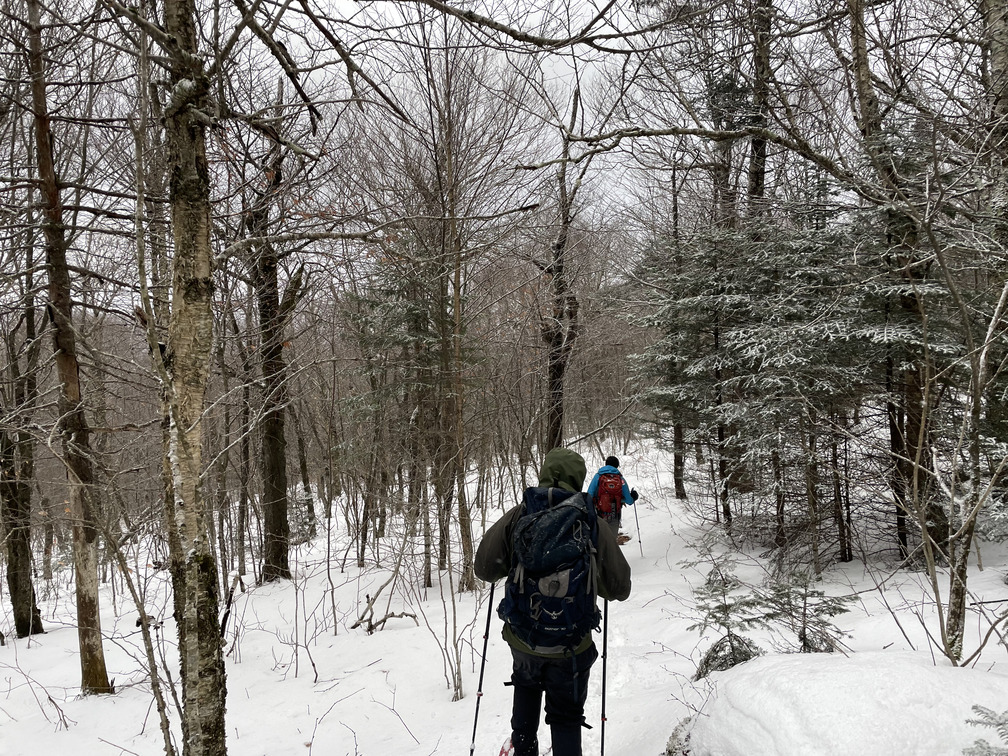
The trek over to Eagle took much longer than I remembered. We round-robinned again, and this time Marv was more insistent about doing it correctly. One frustration for me here was that my snowshoes came off not once, not twice, but three times! I fully tightened them as I rotated back to the caboose and they stayed on for the rest of the hike. Either because I did it right or because the bindings froze shut!
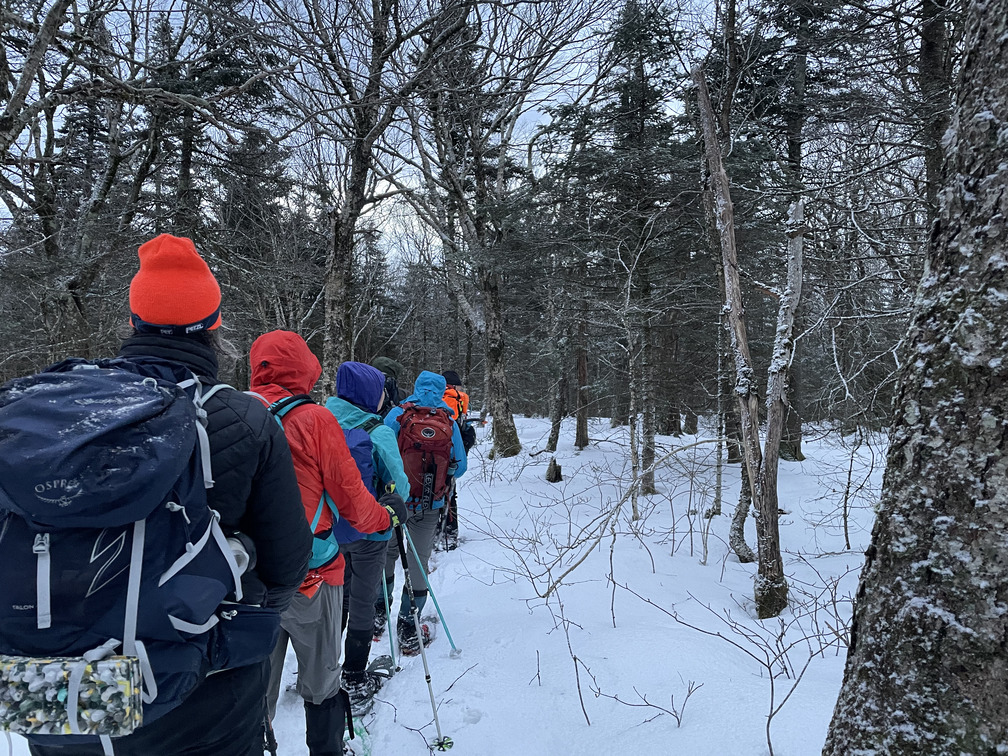
The sun was setting by the time we summitted Eagle. There was a brand new notebook in the canister, placed there by Jim Bouton just a few days earlier. As the canister maintainer, I guess Jim is the first to sign every notebook! Marv said we’d bushwhack down rather than take the trail back. Good! That would be much shorter and faster! But also a new experience for me. I’d never bushwhacked at night, let alone hike at night in the winter. I didn’t look forward to this, but I was glad to at least be experiencing it with a group.

We followed the trail for about a quarter mile past Eagle before stepping off onto a kind of “tongue”. This was a narrow enough ridge that you could see it fall off steeply on either side. I really like these kinds of formations where you can see where you are in space. Or at least you could while there was still light. Within about half an hour it was pitch dark and we put our headlights on.
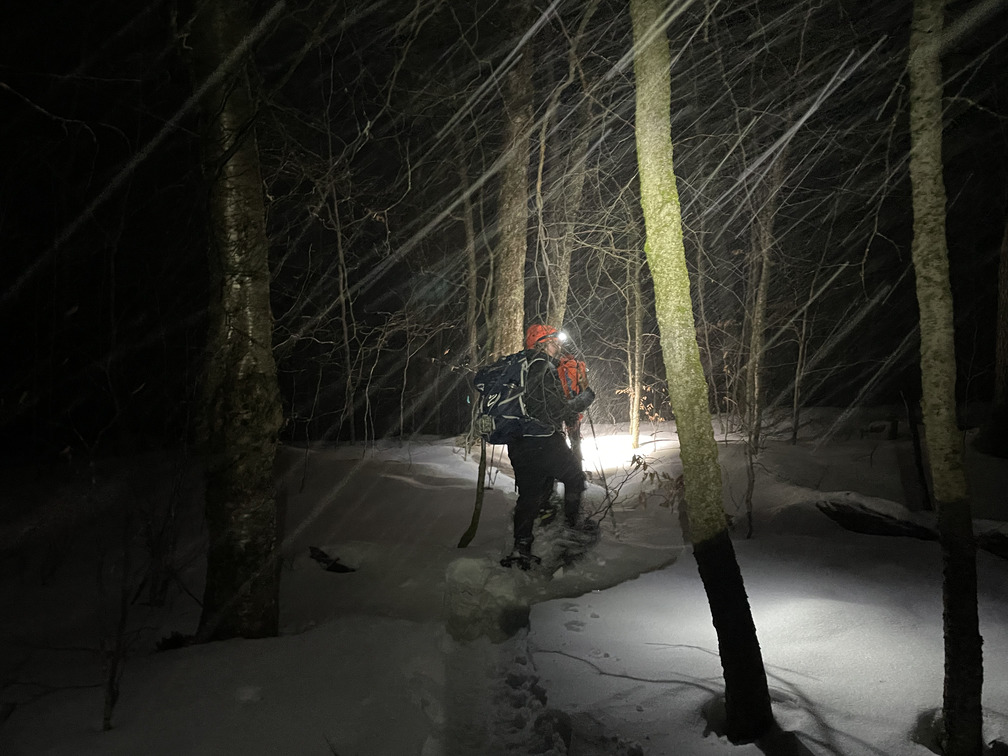
We were lucky that there was a single set of snowshoe tracks to follow down the whole way. There were a few steep ledges and this made it easier to navigate through them.
It started snowing heavily on our way down. This was quite pretty in our headlamps! I put on a warmer jacket and hand warmers, but my feet were the coldest and there wasn’t much I could do about that.
The snowshoe tracks eventually led us to a logging road and finally the blazed red trail. The brand-new Eastwind hotel looked amazing all lit up with the snow. It was strange to see so many lights after hiking through the dark. It made me think about how, had it been a clear night, we would have had amazing views of the moon and the stars while we hiked.
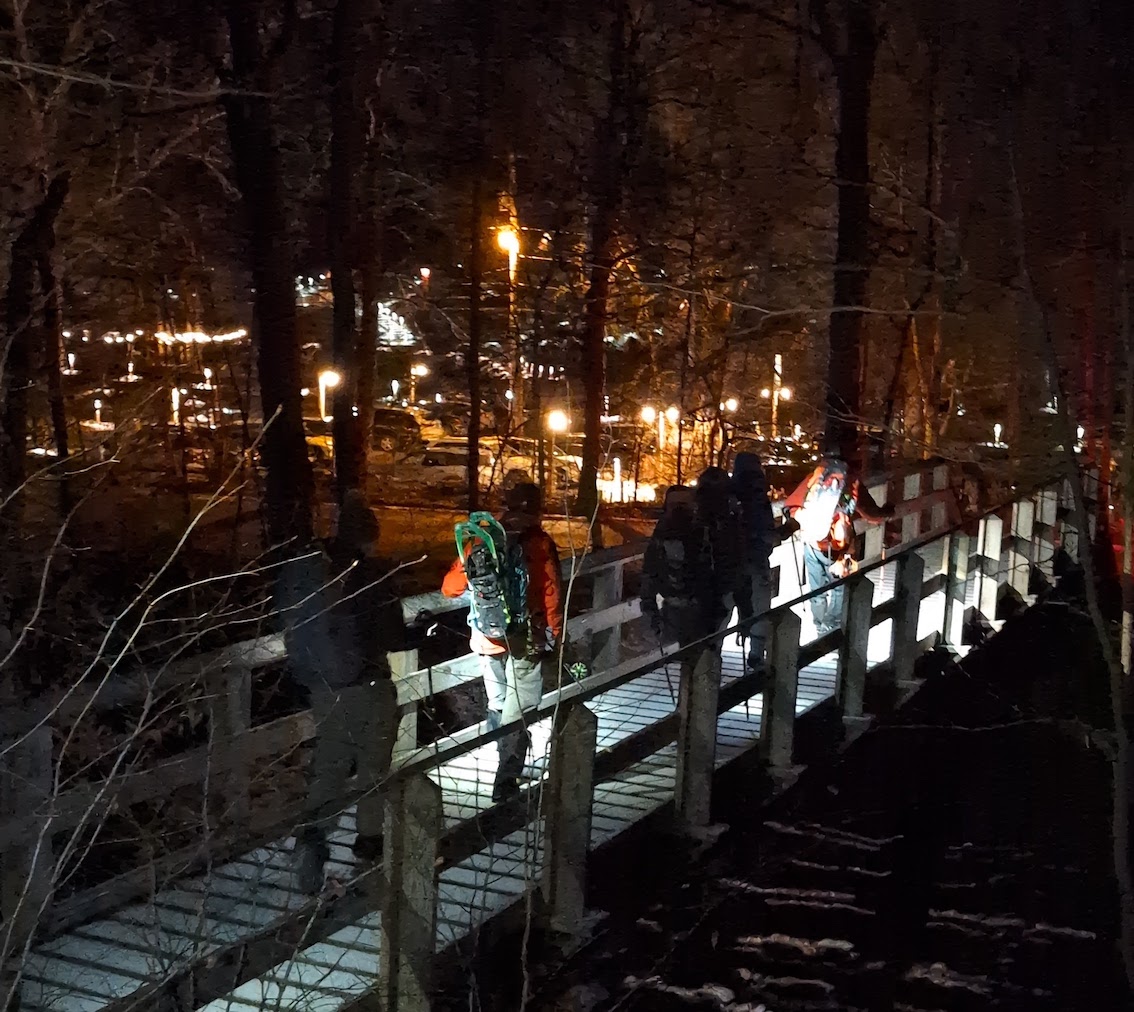 📸 Photo by Karol Andino
📸 Photo by Karol Andino
Finally we got to the bridge and our cars. I’d brought a change of socks, but not shoes, so my cold toes stayed in my wet boots. My toes were still frozen all the way home. They remained a little tingly the next day, and one of them still doesn’t feel fully normal two days later as I’m writing this.
A few lessons from this hike:
- Hiking with other people is nice, but it’s extremely frustrating to have no control over the pace. I probably shouldn’t do any more 3500 Club hikes that are listed as “moderate” pace.
- I should bring a change of socks and shoes, so that I’m able to drive home in something dry.
I’m not sure what my takeaway about my feet should be. Be more careful to not get wet earlier in the hike? Bring a change of socks? Don’t wear toe warmers? (Maybe my feet got sweaty, not wet.) Maybe I just need new boots? Mine are only a year old, but I have been using them a lot.
This would have been much less of an issue had this hike been done at a reasonable pace. My toes would have been much less cold had I completed this hike in six hours, rather than ten and a half.
In any case, two winter peaks down, thirteen to go. I’m signed up for a Devil’s Path hike in February that I hope will be more brisk. But I’m also doubtful that I’ll finish my winter peaks this season. After this hike I’m not feeling very psyched.
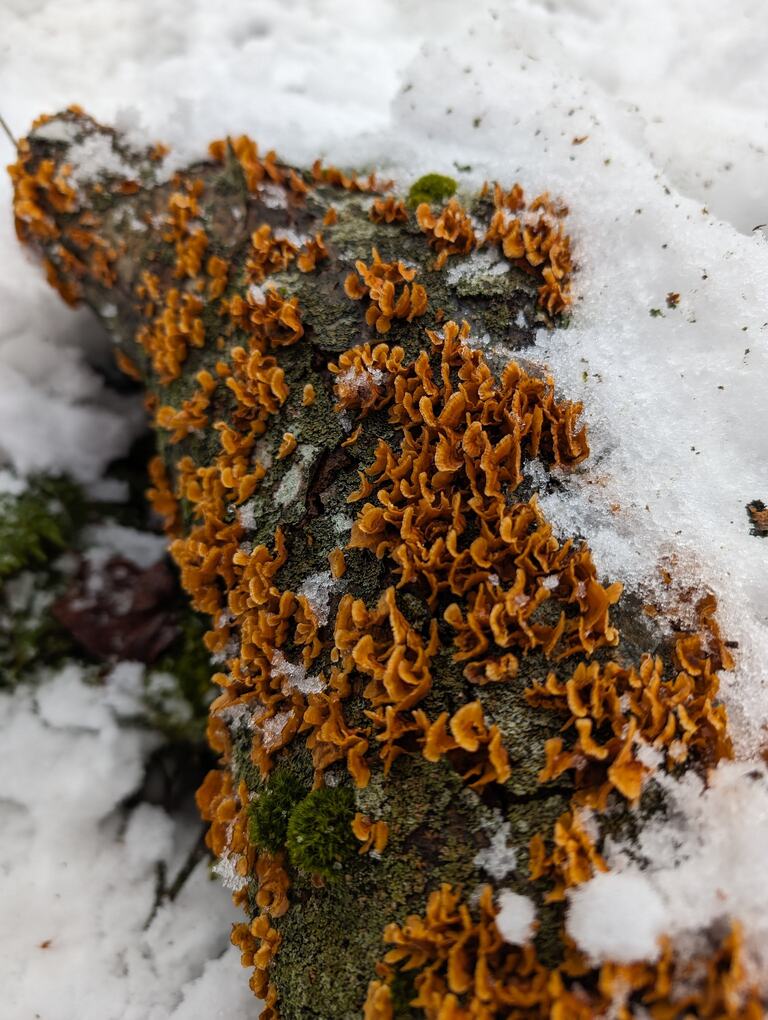 📸 Photo by Karol Andino
📸 Photo by Karol Andino
